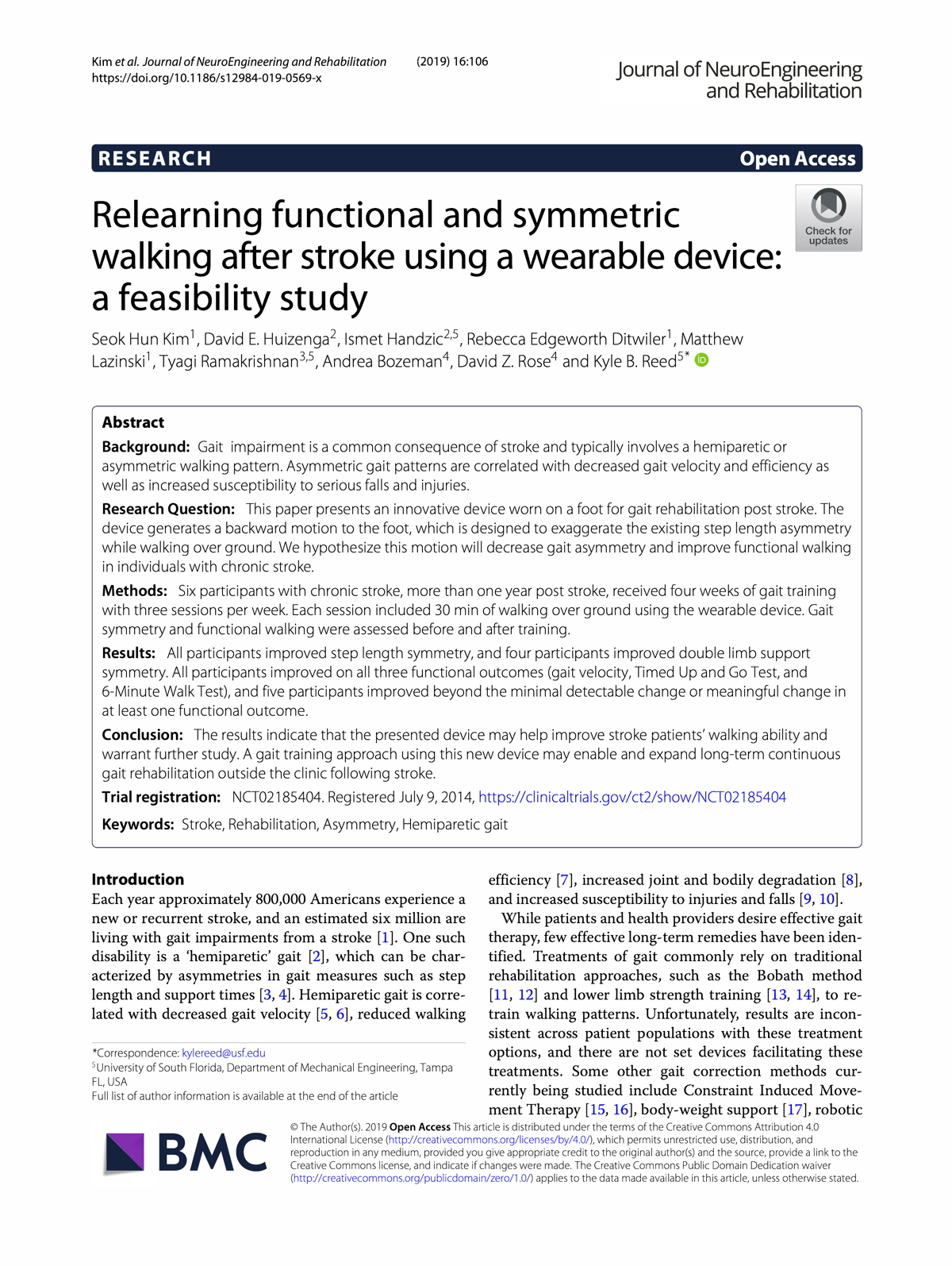
|
|
Relearning functional and symmetric walking after stroke using a wearable device
AbstractBackground: Gait impairment is a common consequence of stroke and typically involves a hemiparetic or asymmetric walking pattern. Asymmetric gait patterns are correlated with decreased gait velocity and efficiency as well as increased susceptibility to serious falls and injuries.
Research Question: This paper presents an innovative device worn on a foot for gait rehabilitation post stroke. The device generates a backward motion to the foot, which is designed to exaggerate the existing step length asymmetry while walking over ground. We hypothesize this motion will decrease gait asymmetry and improve functional walking in individuals with chronic stroke.
Methods: Six participants with chronic stroke, more than one year post stroke, received four weeks of gait training with three sessions per week. Each session included 30 min of walking over ground using the wearable device. Gait symmetry and functional walking were assessed before and after training.
Results: All participants improved step length symmetry, and four participants improved double limb support symmetry. All participants improved on all three functional outcomes (gait velocity, Timed Up and Go Test, and 6-Minute Walk Test), and five participants improved beyond the minimal detectable change or meaningful change in at least one functional outcome.
Conclusion: The results indicate that the presented device may help improve stroke patients' walking ability and warrant further study. A gait training approach using this new device may enable and expand long-term continuous gait rehabilitation outside the clinic following stroke.
[ Springer Nature ]

